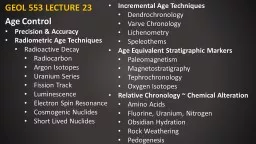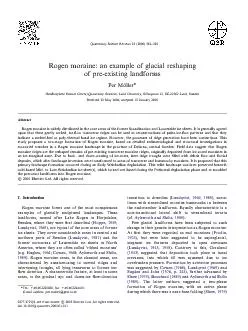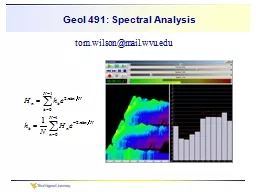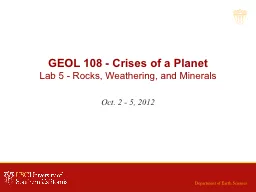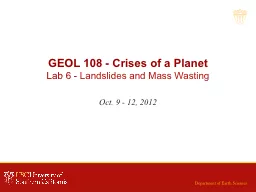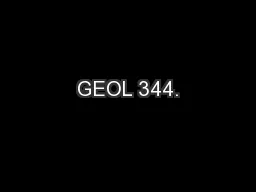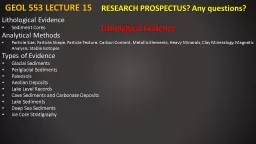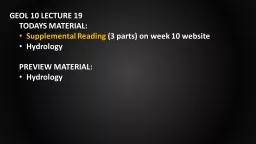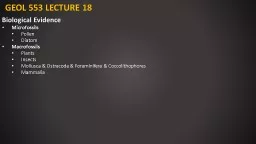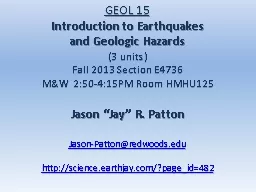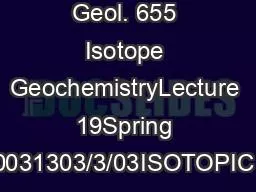PPT-GEOL 553 LECTURE 23
Author : karlyn-bohler | Published Date : 2016-09-08
Age Control Precision amp Accuracy Radiometric Age Techniques Radioactive Decay Radiocarbon Argon Isotopes Uranium Series Fission Track Luminescence Electron Spin
Presentation Embed Code
Download Presentation
Download Presentation The PPT/PDF document "GEOL 553 LECTURE 23" is the property of its rightful owner. Permission is granted to download and print the materials on this website for personal, non-commercial use only, and to display it on your personal computer provided you do not modify the materials and that you retain all copyright notices contained in the materials. By downloading content from our website, you accept the terms of this agreement.
GEOL 553 LECTURE 23: Transcript
Download Rules Of Document
"GEOL 553 LECTURE 23"The content belongs to its owner. You may download and print it for personal use, without modification, and keep all copyright notices. By downloading, you agree to these terms.
Related Documents

